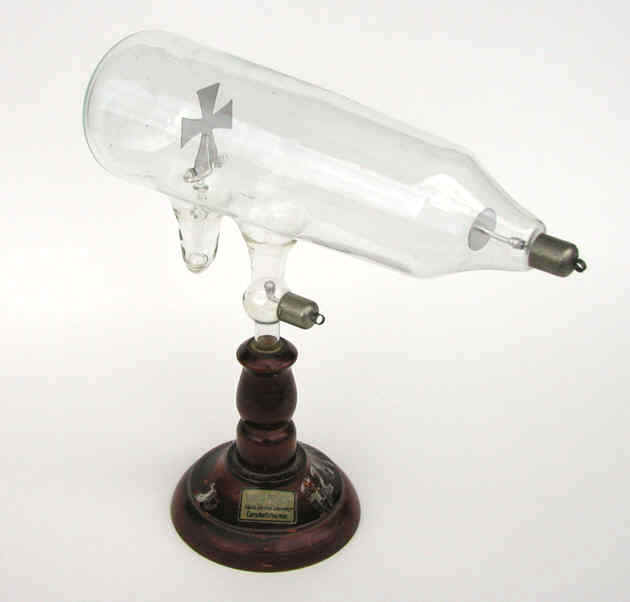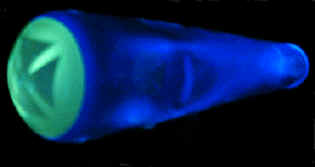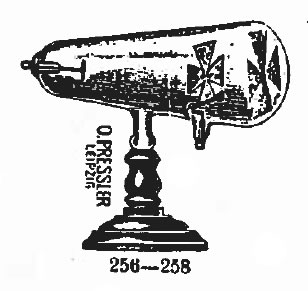Maltese Cross Crookes Tube (ca. 1910-1940)

The Maltese Cross tube was invented in the 1880s by William Crookes during his investigations unto the nature of cathode rays (electrons).
The tube's distinctive feature is the Maltese Cross that could be laid flat or stood up.
It has been speculated that Crookes used a Maltese Cross because the pronunciation of his name is not that different from the pronunciation of the Latin word for cross: crux.

Shadow image of cross on end of tube
When a high voltage was applied to the electrodes, the flat end of the tube fluoresced (and emitted low intensity X-rays). When positioned vertically, the cross was positioned in the cathode ray beam so that its shadow appeared on the end of the tube. This indicated that cathode rays traveled in straight lines and that they could be stopped by a thin piece of metal.

The example shown here was manufactured by the Otto Pressler company of Germany, at least that is the name on the wooden base.
The figure to the left is from the 1914 Otto Pressler catalog.
Size: Approximately 9" long with a 2 1/2" maximum bulb diameter
